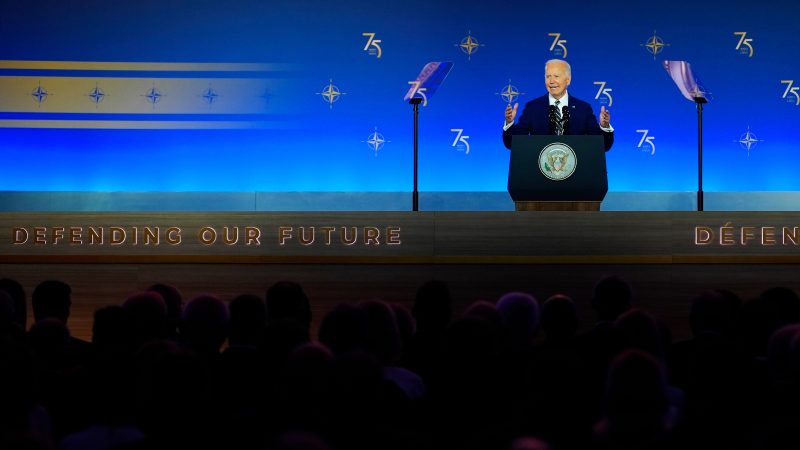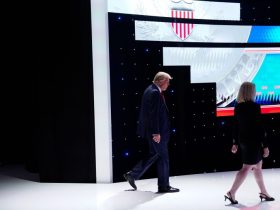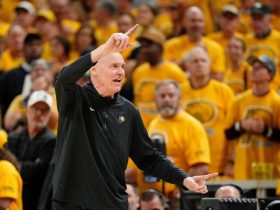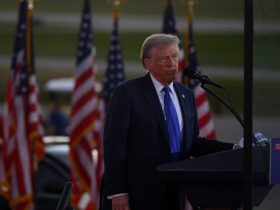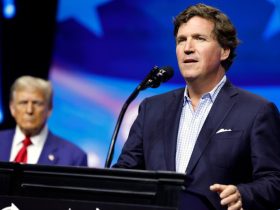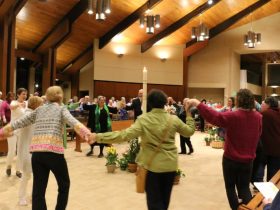President Biden’s performance at the NATO summit this week is under close scrutiny not only by leaders of the Western alliance but by Democratic lawmakers, as he has managed to slow calls for him to exit the presidential race and seeks to prove to his party that he is the best person to take on Donald Trump.
Biden opened the summit on Tuesday evening by welcoming the more than 30 leaders who descended on Washington at the same time as Democrats returned to Capitol Hill and debated whether the president should remain the party’s presidential nominee.
Foreign leaders are closely watching Biden and how discussions among Democrats unfold. His halting debate performance June 27 heightened fears among some allies that a second Trump term had become increasingly likely — an outcome most European leaders dread.
Biden’s most important test will come Thursday, when he is set to hold a rare news conference that Democrats say will be critical to prove that he has the energy and mental agility to campaign against Trump. European leaders will also closely watch the president’s news conference to try to determine whether his debate performance was a bad night, as Biden has argued, or a sign of a bigger problem that could make it more challenging to defeat Trump.
“The summit provides the president an opportunity to showcase his strong global leadership in contrast to Donald Trump, who would weaken NATO,” said Sen. Chris Van Hollen (D-Md.). “The whole summit gives him an opportunity to showcase his leadership and foreign policy credentials, and the press conference gives him an opportunity to address concerns.”
Biden defiantly told Democratic lawmakers fretting about his candidacy that he has no intention of leaving the presidential race. He has told Democrats they must move on from his debate performance and instead focus on taking on Trump.
Those efforts appear to have worked, at least for now, in quieting dissent on Capitol Hill. But all of that could change if Biden falters at his news conference Thursday, several Democratic lawmakers said.
On Wednesday, Biden is set to take part in a working session before he and first lady Jill Biden host NATO leaders and their spouses at a White House dinner. Before heading over to the NATO summit, Biden will stop by a meeting with AFL-CIO leaders and later in the day will hold his first bilateral meeting with Britain’s new prime minister, Keir Starmer.
Biden’s demeanor and mental agility is likely to be under close scrutiny at NATO meetings and the dinner. During the Group of Seven nations summit in Italy last month, several European leaders came away stunned at how much older the president seemed from when they had last interacted with him only a year or, in some cases, mere months earlier, several officials familiar with their reactions said.
The leaders noticed he seemed more tired, more frail and was more prone to losing his train of thought, though he would quickly get back on track. The overall impression, the officials said, was that leaders believed Biden was capable of fulfilling his duties now but wondered how he would be able to serve another four-year term.
Biden sought to quiet those concerns beginning with his speech on Tuesday welcoming NATO leaders to Washington. He spoke passionately about the renewed strength of the alliance — highlighting the addition of two new countries, Finland and Sweden, and the increase in countries spending at least 2 percent of GDP on defense — and gave an implicit rebuke of Trump. The former president has threatened to shred the alliance and said he would allow Russia to do “whatever the hell they want” to any NATO country that doesn’t spend enough.
Biden did not mention Trump by name but stressed that a bipartisan majority of Americans support the alliance and spoke of the danger of a world without it.
“It’s good that we’re stronger than ever because this moment in history calls for our collective strength,” Biden said. “The American people understand what would happen if there was no NATO, another war in Europe, American troops fighting and dying, dictators spreading chaos.”

